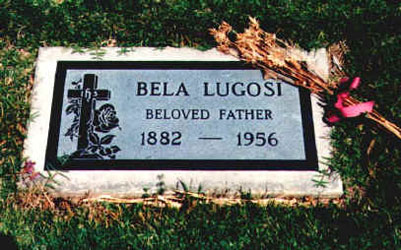Bela Lugosi 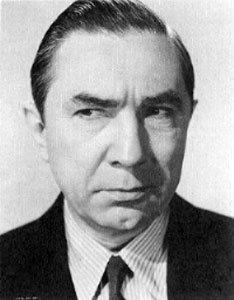 Lugosi's first film appearance was in the 1917 movie Az ezredes (known in English as The Colonel). Lugosi would make twelve films in Hungary between 1917 and 1918 before leaving for Germany. Following the collapse of Béla Kun's Hungarian Soviet Republic in 1919, left-wingers and trade unionists became vulnerable. Lugosi was proscribed from acting due to his participation in the formation of an actor's union. In exile in Germany, he began appearing in a small number of well received films, including adaptations of the Karl May novels, Auf den Trümmern des Paradieses (On the Brink of Paradise), and Die Todeskarawane (The Caravan of Death), opposite the ill-fated Jewish actress Dora Gerson. Lugosi left Germany in October 1920, intending to emigrate to the United States, and illegally entered the country at New Orleans in December 1920. He was finally legally inspected at Ellis Island in March 1921. On his arrival in America, the 6 foot 1 inch (1.85 m), 180 lb. (82 kg) Béla worked for some time as a laborer, then entered the theater in New York City's Hungarian immigrant colony. His first major American role came in the 1923 J. Gordon Edwards directed melodrama The Silent Command opposite actors Edmund Lowe and Carl Harbaugh. 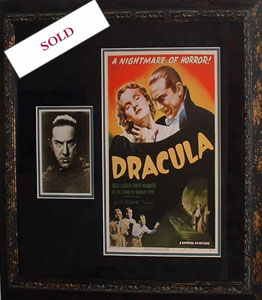 Bela Lugosi as Dracula Lugosi was approached to star in a stage production adapted by Hamilton Deane and John L. Balderston from Bram Stoker's novel Dracula. The Horace Liveright production was successful. Despite his critically acclaimed performance on stage Lugosi was not the Universal Pictures first choice for the role of Dracula when the company optioned the rights to the Deane play and began production in 1930. A persistent rumor asserts that director Tod Browning's long-time collaborator Lon Chaney was Universal's first choice for the role, and that Lugosi was chosen only due to Chaney's death shortly before production. This is questionable, because Chaney had been under long-term contract to Metro-Goldwyn-Mayer since 1925, and had negotiated a lucrative new contract just before his death. Chaney and Browning had worked together on several projects (including four of Chaney's final five releases), but Browning was only a last-minute choice to direct the movie version of Dracula after the untimely death of director Paul Leni, who was originally slated to direct. In reality, Universal's initial choice was probably Conrad Veidt, who had some acclaim at the studio after appearing in their production of The Man Who Laughs (1928). 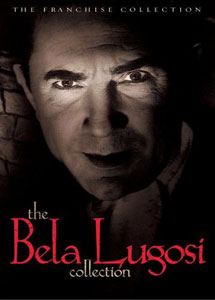 A number of factors worked against Lugosi's career in the mid-1930s. Universal changed management in 1936, and per a British ban on horror films, dropped them from their production schedule; Lugosi found himself consigned to Universal's non-horror B-film unit, at times in small roles where he was obviously used for "name value" only. Throughout the 1930s Lugosi, experiencing a severe career decline despite popularity with audiences (Universal executives always preferred his rival Karloff), accepted many leading roles from independent producers like Nat Levine, Sol Lesser, and Sam Katzman. These low-budget thrillers indicate that Lugosi was less discriminating than Boris Karloff in selecting screen vehicles, but the exposure helped Lugosi financially if not artistically. Lugosi tried to keep busy with stage work, but had to borrow money from the Actors' Fund to pay hospital bills when his only child, Bela George Lugosi, was born in 1938. His career was given a second chance by Universal's Son of Frankenstein in 1939, when he played the plum character role of Ygor, a sly hunchback, in heavy makeup and beard. The same year saw Lugosi playing a straight character role in a major motion picture: he was a stern commissar in MGM's Greta Garbo comedy Ninotchka. This small but prestigious role could have been a turning point for the actor, but within the year he was back on Hollywood's Poverty Row, playing leads for Sam Katzman. These horror, comedy, psycho, and mystery B-films were released by Monogram Pictures. At Universal, he often received star billing for what amounted to a supporting part. The Gorilla had him playing straight man to Patsy Kelly, in a role she told Bose Hadleigh was her finest. 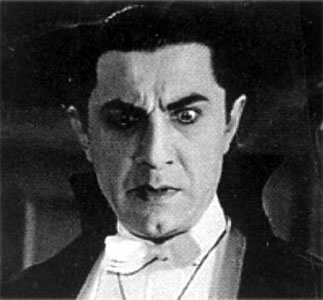 Abbott and Costello Meet Frankenstein was Bela Lugosi's last "A" movie. For the remainder of his life he appeared—less and less frequently—in relatively obscure, low-budget features. During the early 1950s he made personal appearances and did stage work, including a theatrical engagement in England. While there he co-starred in a lowbrow comedy, Mother Riley Meets the Vampire (also known as Vampire over London and My Son, the Vampire). Upon his return to America, Lugosi was interviewed for television, and revealed his ambition to play more comedy, though wistfully noting, "Now I am the boogie man." Independent producer Jack Broder took Lugosi at his word, casting him in a jungle-themed comedy, Bela Lugosi Meets a Brooklyn Gorilla. Another opportunity for comedy came when Red Skelton invited Lugosi to appear in a sketch on his live CBS program. Lugosi memorized the script for the skit, but became confused on the air when Skelton began to ad lib. This was depicted in the Tim Burton film Ed Wood, with Martin Landau as Lugosi. Though Burton did not actually identify the comedian in the biopic, the events depicted were correct. Late in his life, Bela Lugosi again received star billing in movies when filmmaker Edward D. Wood, Jr., a fan of Lugosi, found him living in obscurity and near-poverty and offered him roles in his films, such as Glen or Glenda and as a Dr. Frankenstein-like mad scientist in Bride of the Monster. During post-production of the latter, Lugosi decided to seek treatment for his addiction, and the premiere of the film was said to be intended to help pay for his hospital expenses. According to Kitty Kelley's biography of Frank Sinatra, when the entertainer heard of Lugosi's problems, he helped with expenses and visited at the hospital. Lugosi would recall his amazement, since he didn't even know Sinatra. The extras on an early DVD release of Plan 9 from Outer Space include an impromptu interview with Lugosi upon his exit from the treatment center in 1955, which provide some rare personal insights into the man. During the interview, Lugosi states that he is about to go to work on a new Ed Wood film, The Ghoul Goes West. This was one of several projects proposed by Wood, including The Phantom Ghoul and Dr. Acula. With Lugosi in his famed Dracula cape, Wood shot impromptu test footage, with no storyline in mind, in front of Tor Johnson's home, a suburban graveyard and in front of Lugosi's apartment building on Carlton Way. This footage ended up in Plan 9 from Outer Space. Lugosi married Hope Linninger in 1955, as his fourth wife. Following his treatment, Lugosi made one final film, in late 1955, The Black Sleep, for Bel-Air Pictures, which was released in the summer of 1956 through United Artists with a promotional campaign that included several personal appearances. To his disappointment, however, his role in this film was of a mute, with no dialogue. Lugosi died of a heart attack on August 16, 1956 while lying on a couch in his Los Angeles home. He was 73. Rumor has it that Lugosi was clutching the script for The Final Curtain, a planned Ed Wood project, at the exact moment of his death. However, this is not true Wikipedia contributors, 'Béla Lugosi', Wikipedia, The Free Encyclopedia, 30 December 2008, 22:39 UTC, <http://en.wikipedia.org/w/index.php?title=B%C3%A9la_Lugosi&oldid=260971055>
|
|||
 |
|
||
|
|||
